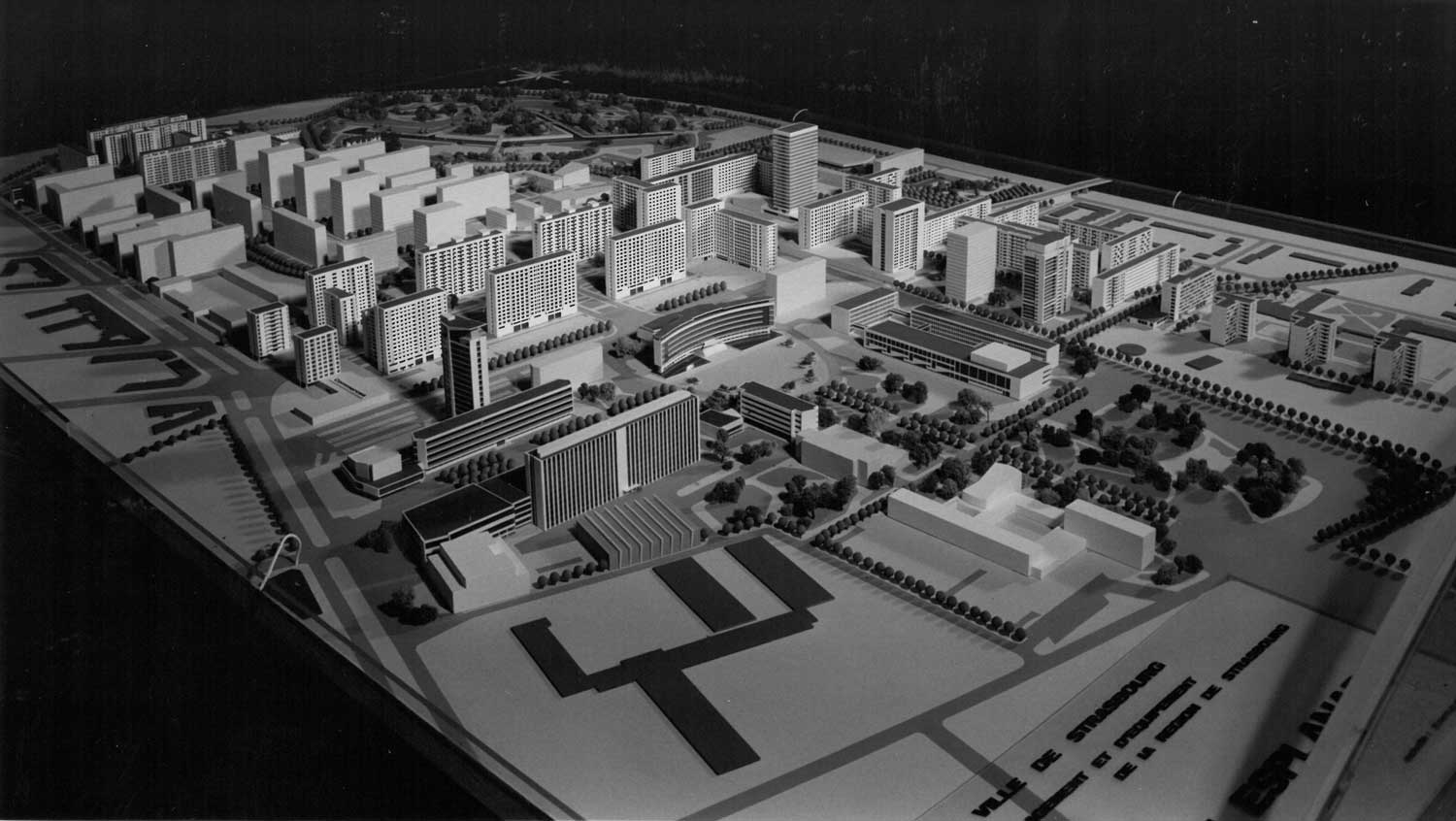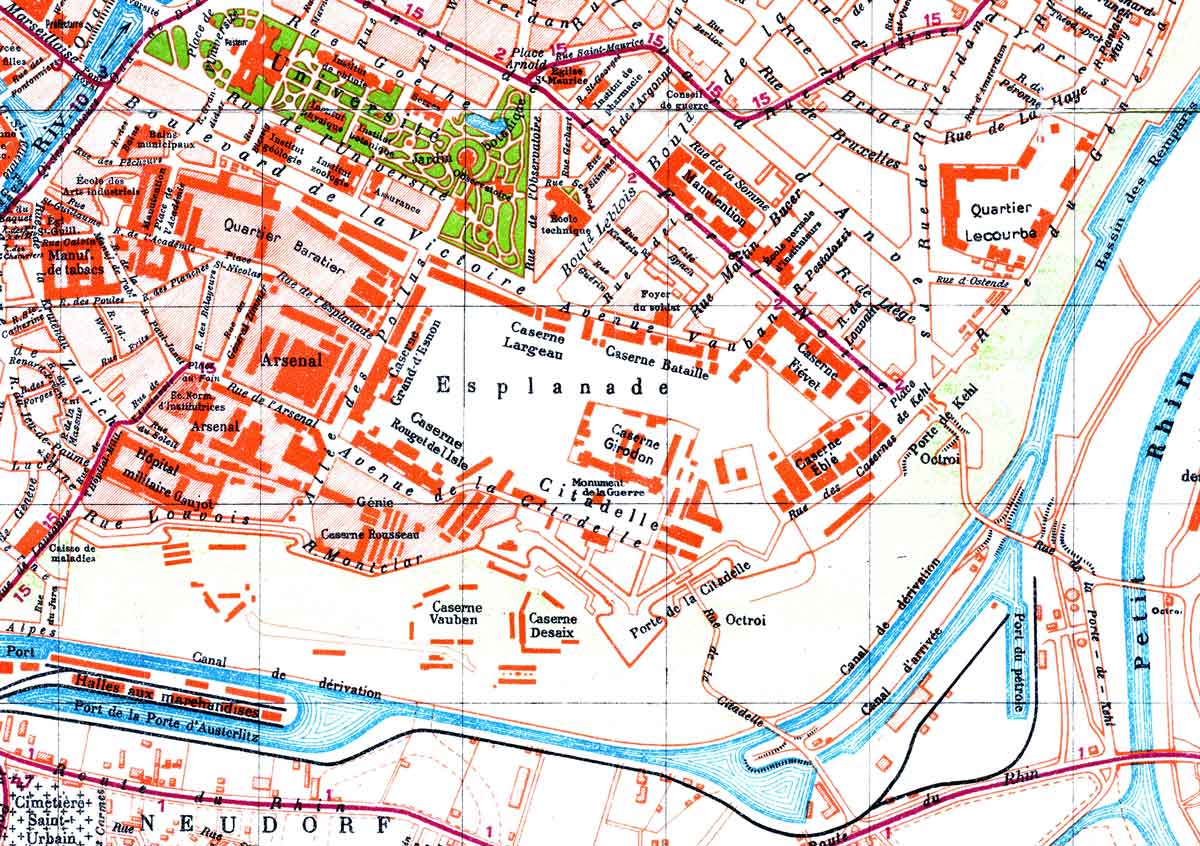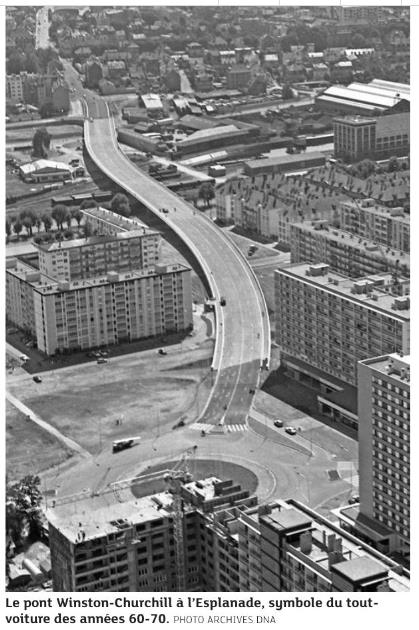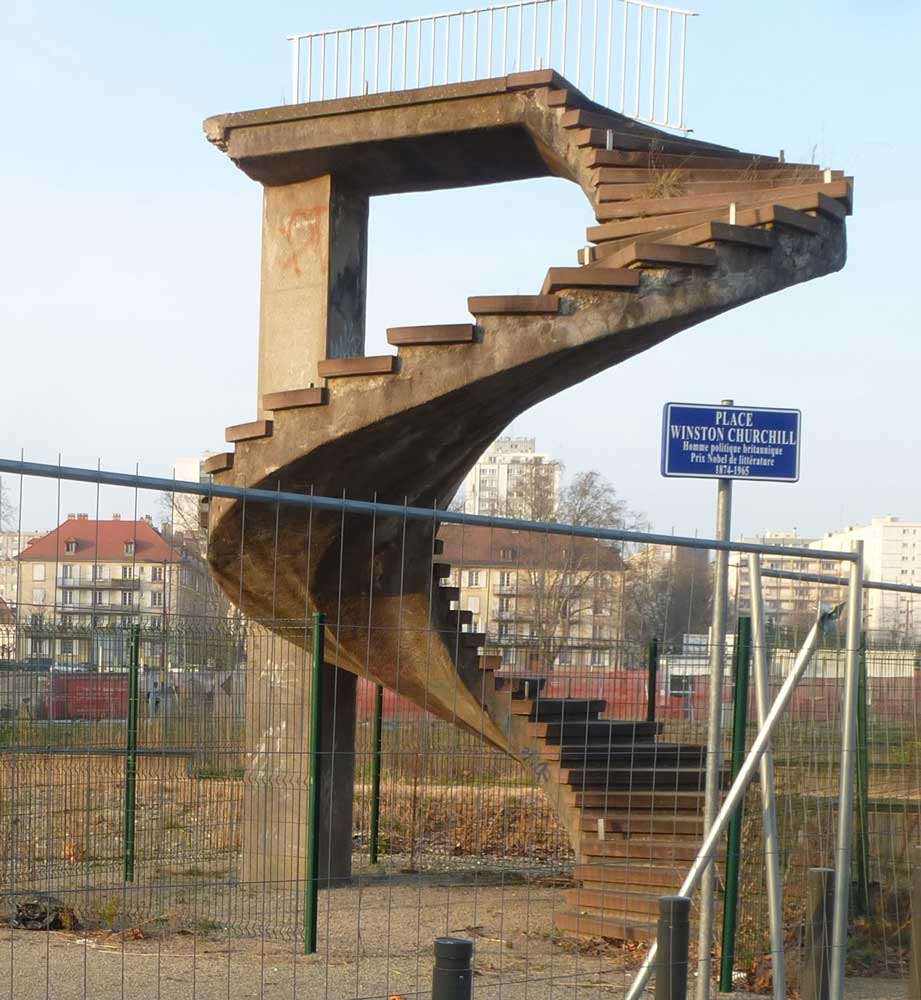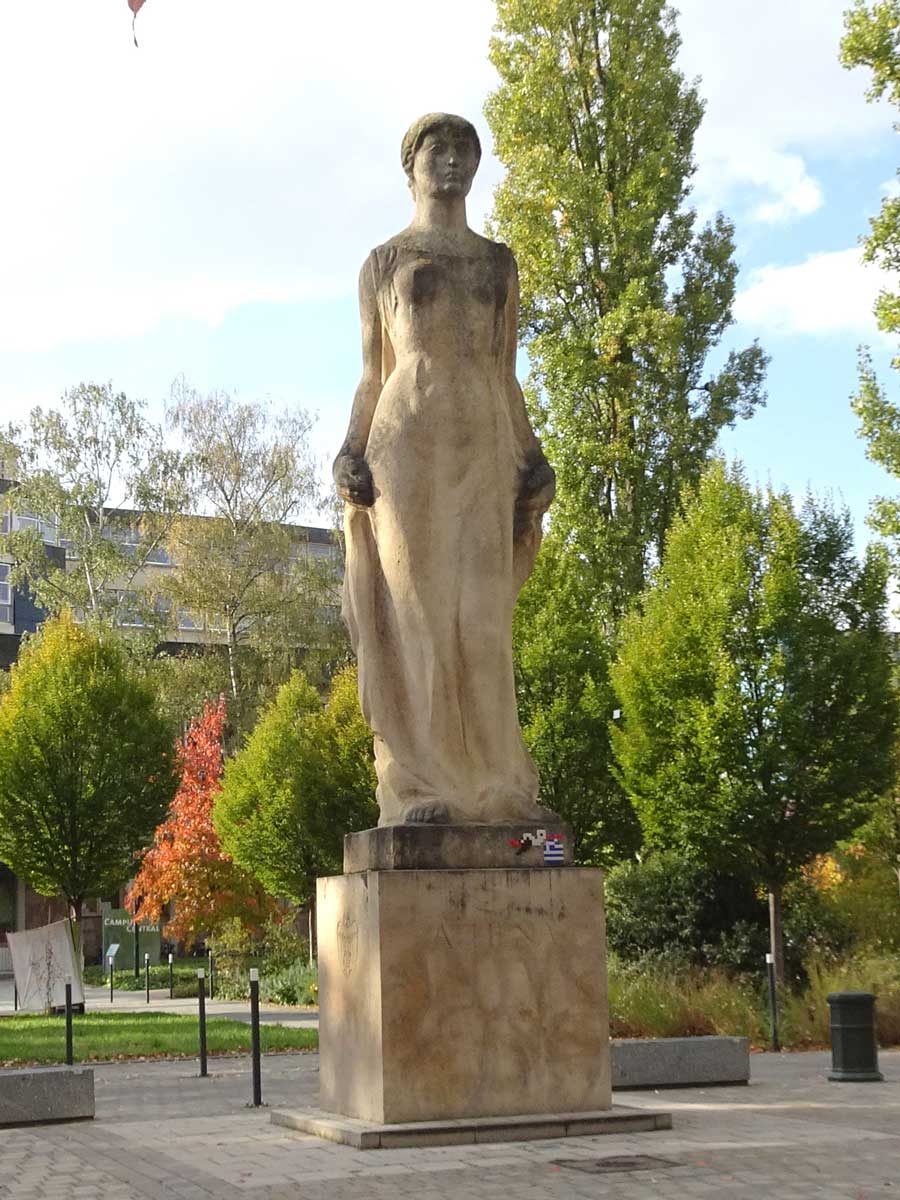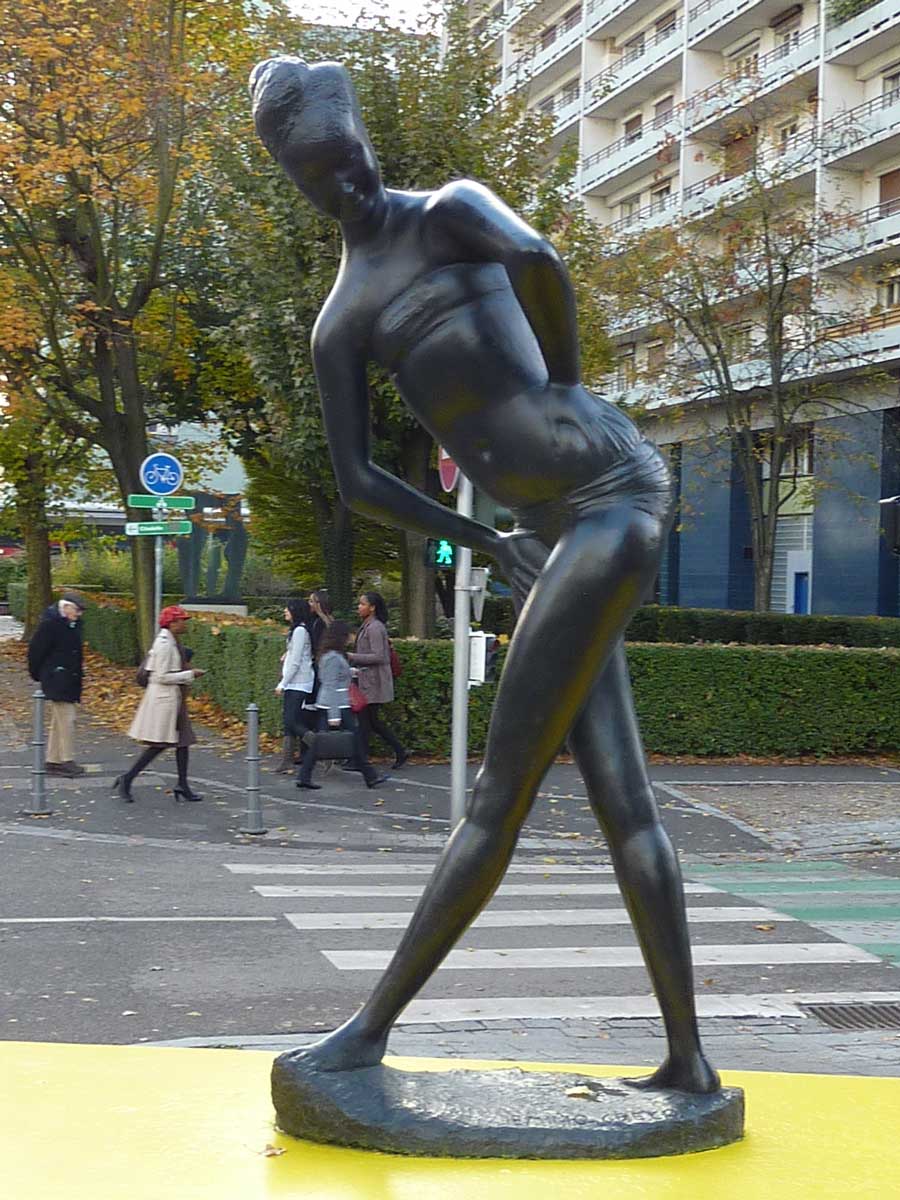The Esplanade : A closer look on an unknown district
December 13th 2020, by Leo
The old parts of Strasbourg are not the only ones to have a soul. I would like to talk to you today about a district in which I myself lived for a few years. To no one’s surprise, given the title of the article, let me introduce the Esplanade.
At the time, I would come back from the Krutenau, after a late drink at the Chariot (an almost legendary address in student circles) and I’d cross the old concrete campus. It was in a time before the huge restructuring plan for this part of the university, between the age-old Krutenau and the Avenue du Général De Gaulle. Nowadays, the formerly called “Red” square and its dry pavement in front of the Law school has given way to a green and grassy atmosphere, an invitation to relax and have a stroll.
The other alternative was to go back home by walking along the Gaujot administrative city, to questioningly observe this weirdly styled Catholic church (namely the Church of Risen Christ, a building from the 60’s), to sniffle a McDonald’s fragrance and get back to my apartment in this district of high buildings reminiscent of French Social Housing. At the time, I did not yet see that history’s poetry leaves some marks even in the reinforced concrete of such districts that have an air of badly aged fake-future.
A word on the origin of the district’s name first, if you did not get to read my articles on the Districts’ names. An “esplanade”, according to the dictionary, is in the first sense an “open, level space separating a fortress from a town” (this to have a clear view and firing range for the defense).
Indeed, all these buildings have come to crash on the military piece of land set between the citadel (built according to Vauban’s plans) and the inhabited districts around the Krutenau.
Born to meet the defensive requirements of a Strasbourg city which was then under the rule of Louis #14, this Citadel can still be discovered during a stroll, in its eponymous park version, complete with petanque areas, water games for kids and beautiful trees. As for the square itself, it more or less corresponded to everything that is around the Avenue du Général De Gaulle.
And this military esplanade was a lasting one. Once it passed under German rule, Strasbourg got covered by numerous army barracks to meet the military criteria (15,000 men in Strasbourg!) of a more modern era. These will all be taken over by the French army at the end of the Great War.
This long military tradition will give way to the vision of a new, breathing Strasbourg: in 1958, the city will buy 170 acres of military land to allocate them to the park, to the university, and above all to shelter its growing population. And so was born the Avenue du Général De Gaulle, connecting the German district to the fronts of Neudorf. The new Winston Churchill bridge spanned the Austerlitz basin in 1967, completing the district.
Besides, some people may have noticed for a time the last remnant of this version of the bridge, behind our huge cinema : a single spiral staircase, destroyed in 2014, the rest having disappeared in 2006 (it was almost like street art 😉 ).
Let’s go back to the other side of our district to find the few buildings still witness to this military use. The many barracks have disappeared, the arsenal has split, on the French side remains only the Gaujot administrative city – what am I saying, the military hospital. This shall comfort all those who, at some point, thought to themselves that these offices look really solid! The complex was born right in the middle of the Vauban citadel’s creation, as evidenced by its 18th century entrance on the Krutenau side, in the… Military Hospital Street!
Let us leave here the officers, doctors and other shank cutters (at the time), I would like to give you the location of one last stop for your next walk in the area, right in the midst of the Avenue du Général De Gaulle. Try and remember the small square there, which makes the connection with Law schoool, opening onto the campus. And this small square is dominated by a tall statue, a goddess of ancient times, Athena, guarding the temples of knowledge. Besides, go take a look at its pedestal to uncover the emblems of the goddess who came out of Zeus’s thigh : her owl, a symbol of wisdom, the olive tree which she offered to the humans and a snake, so as not to forget Medusa, who owes her her monstrosity.
Facing it, so small on its canary-yellow stand, is the “Grande Baigneuse” (The Great Bather) by Emilio Greco, an Italian artist. I heard it said once that the reason she turns her… back so blatantly at Athena, is to make fun of her: the malicious Bather and her 5 feet versus the goddess and her serious 13 feet. Now it’s up to you to make your own opinion about it. Then feel free to let me know what you think when you join our Free Tours, and we’ll discuss some more about the city we live in and that lives in us as well. And who knows, maybe some day we’ll offer you a guided tour directly on site !?
>> Read the Districts’ names part 1, part 2, part 3 & part 4
>> Read “Praise to the Street Art“

